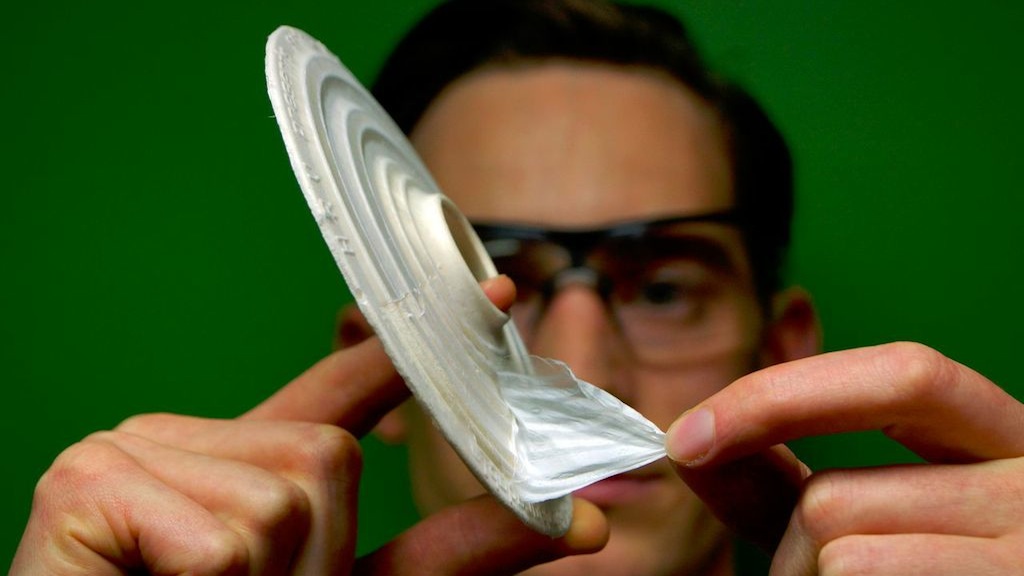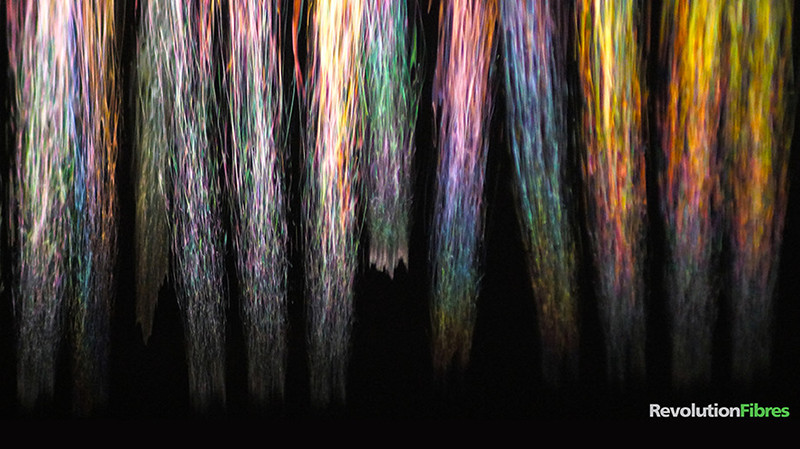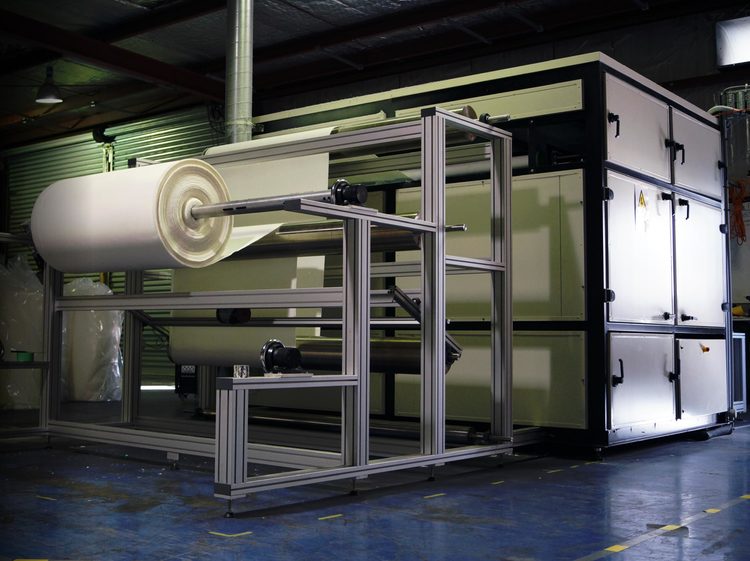Pluck a hair from your head and take a close look. Pretty fine in size. Now imagine a fibre 500 times thinner. For the team at Revolution Fibres, based in Henderson West Auckland, that’s what’s being created everyday. These nanofibres formed as rolled-good textiles that are being converted to everyday products – from filters for ventilation systems and facemasks; to reinforcing composites such as fishing rods and vehicle parts; to anti-allergy fabrics for bedding.
Founded in 2009, in five short years Revolution Fibres has evolved from a small team of ambitious, lab-scale entrepreneurs; to being recognized as NZ’s Most Innovative Business (2012 NZ Innovation Awards); to an established, world-leading nanofibre manufacturer with a very exciting future.
Nanofibre is created using a process called electrospinning – introducing solutions of polymer into a high voltage field, and drawing ultra-fine fibres off droplets. The process doesn’t use high heat or pressure (typical in fibre production) – and therefore a huge range of textiles from natural materials is possible. And while Revolution Fibres manufactures nanofibre from both synthetic and natural feed-stocks, it’s the products that come from New Zealand’s food waste streams that are attracting the most attention.
Take, for example, Revolution Fibres first product to market – the Seta™ Diffuser Filter developed for leading home ventilation firm HRV. Placed on the ceiling diffusers of the HRV ventilation system, these biodegradable filters have a web of over 30km of nanofibre stretched across a specially moulded Potatopak (waste potato starch) base. Using van der waals forces (the same forces that allow a gecko to walk on a ceiling), these fibres attract microspcopic bacteria, fungi and lung-damaging particles. Plus, using the antibacterial properties of grape skins and berry seeds (a by-product of the wine and juice market), the fibres naturally inhibit microbial growth. It’s the world’s only 100% natural, biodegradable air filter, made entirely from food wasteand currently protecting over 5,000 Kiwi homes.
Not wanting to stop there, Revolution Fibres turned its attention to Plant and Food Research’s marine collagen derived from the waste skins of the hoki fish. Hoki is one of New Zealand’s most important commercial fish, with the majority processed for sale as fillets or minced meat. Plant & Food Research scientists have developed a new method for extracting and formulating collagen from hoki skins, a by-product of the seafood industry, for use as an industrial biomaterial. Marine collagen is a highly desirable skincare ingredient and now, through electrospinning, can be transformed into a rapidly-dissolving fabric called actiVLayr®.
With NZ Extracts Ltd, based in Blenheim, Revolution Fibres have crafted specific infusions of collagen fibres using clinically proven plant extracts, making a ready-made cosmetic platform that removes the need for the chemicals present in creams and gels, using only the goodness of 100% natural active ingredients. The product actiVLayr® offers a 100% natural , 100% sustainable, additive-free delivery technology, with proven efficacy. By adjusting the extract types (grapes, kiwi, blackcurrant, seaweed, etc.), actiVLayr® can target various skin appearances and skin healing.
Skincare is but one application for actiVLayr® technology (wound care and drug delivery are other avenues), but this market alone is almost US$95 billion in size, with facial care representing more than 65% of the overall value. Recent innovations for anti-aging, anti-wrinkling and sun care products have helped fuel what has been a 21% value growth since 2010. Taken together with a wide range of alternative applications in med-tech (wound care) and consumer goods, the market opportunity for the actiVLayr® technology is huge.
In another strong relationship with a Crown Research Institute, this time with Scion in Rotorua, Revolution Fibres is excited about the revolutionary development of carbon nanofibre from the primary waste of pulp & paper processing – lignin. Most carbon fibres are derived from petrochemical feedstocks, requiring huge amounts of energy and toxic off-gassing to create carbon products. Now, through electrospinning, we are seeing the world’s second most-abundant polymer being turned into high surface area carbon materials with promising uses in energy storage, composites reinforcement and many other diverse high value markets.
While Revolution Fibres won’t clean up New Zealand’s waste problem (1kg of biopolymer will make a fibre that could reach the Sun!), its electrospinning processes and innovation show what can be achieved by creating high-value products from our abundant bio-waste. The technology is being used in clean water filtration, energy storage for clean-tech power sources, and many biomedical uses – and is a great showcase of nanotechnology delivering its promise in environmental and medical fields.
The timing is right, and the opportunity ripe. Advanced materials and functional fibres are the way of the future. A growing range of innovative applications are being developed, responding to the trend of our technologies, devices and consumer goods getting smaller; coupled with Society’s quest for more sustainable materials. Revolution Fibres has shown through nanofibre production that there are significant opportunities for high value, export products from otherwise discarded biomaterials.
For more information on the collagen applications, click here.






Leave a comment